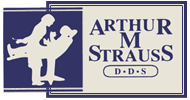Articles - Your Health Magazine, October 2008
The Keystone to Success in Oral Appliance Therapy for Snoring and Sleep Apnea
If oral appliances used to treat snoring and sleep apnea worked and fit in essentially the same way and the mouth, jaws, tongue and throat and habits that impact them were the same in the various people seeking treatment, matching the patient to the oral appliance would be of minimal relevance.
The dentist’s role would be to just make the patient an oral appliance for their snoring or apnea problem. This appears to be the premise behind ads in dental journals placed by suppliers of one-size-fits-all or even custom oral appliances directed at dentists who want to have the option of treating snoring. The same perspective seems congruous with TV or internet ads for self-fitting snoring relief mouth pieces to hold the lower jaw forward to keep the tongue forward and less apt to narrow the throat.
Unfortunately, it is not that simple. Treatment success is defined as providing the minimal intervention (least change) to have the maximum impact (best improvement), least side effects (unwanted collateral damage), and best compliance (user friendliness leading to use as directed).
There are 150 oral appliances available for this treatment and they vary from one another in how they keep the tongue out of the throat. There are two categories or types of oral appliances.
One, the Tongue Retaining Device (TRD), directly holds the tongue in the protruded (sticking out of the mouth) position. The other, the Mandibular (lower jaw) Repositioning Device (MRD), indirectly holds the lower jaw, to which the tongue is anchored, in a protruded position.
The specific TRDs and MRDs are patented according to specific variations in their designs. These design variations impact on how and how well they fit and function.
The inappropriate choice of the type of appliance can result in ineffective or less effective treatment of sleep apnea and reduction or cessation of snoring. Unwanted and unfavorable side effects as jaw joint pain or jaw muscle pain, loosening or repositioning of individual teeth or permanent protrusion of the lower jaw can result from choosing an inappropriate appliance.
Comfort in wearing the appliance, ease of placing and removing it and changing its settings (when appropriate) along with ease of cleaning it impacts a patient’s desire to use it and their compliance with treatment. This too is dependent upon the appliance type or category and design features being an appropriate match to the patient.
In a future article I will discuss in-depth trial procedures where the appliance type and many design characteristics are determined by patients testing trial versions of the MRD and of the TRD at home generally for a period of two weeks each. This coupled with examining each patient and studying x-rays and plaster casts of their teeth and movements of the jaws and tongue allows the skilled and dedicated oral appliance therapy practitioner to obtain the most compatible match of the oral appliance to each patient and maximize treatment success.
